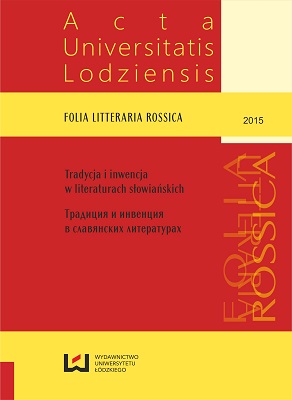Literary and folk paralells of the fresco from the Rila Monastery catholicon’s outdoor narthex
DOI:
https://doi.org/10.18778/1427-9681.S.2015.05Keywords:
parallels, fresco, catholicon, Rila MonasteryAbstract
The article discusses the relation between iconography, literary text, and folk belief, illustrated by some artifacts that belong to different cultural spheres: Renaissance fresco, several pseudoliturgical works which are used in liturgical celebrations, as well as folk records of angelophany witnesses collected during the service. The fresco composition “The Angels Write the Names of the Comings and Goings of the Church” (from the narthex of Rila Monastery, Bulgaria, 1846) was analyzed in comparison with other post-Byzantine frescoes from the liminal part of the orthodox temple, canonical texts (stories of Patericon, “Miracles of the Mother of God” by S. Bakaczić), pseudo-canonical (liturgy comments), folk songs and memorates about angelophanies during the service from Southern Bulgaria. The analyzed material illustrates the thesis that Late Medieval and Balkan Slavs Renaissance culture (XVI–XIX century) is a complex set of literary texts, iconography and folklore, that interacts and forms a communal vision of the world and salvation.
Downloads
Downloads
Published
How to Cite
Issue
Section
License

This work is licensed under a Creative Commons Attribution-NonCommercial-NoDerivatives 4.0 International License.












